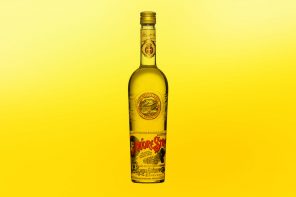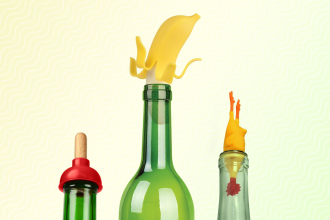Anybody who paid attention for at least fifteen minutes in 5th grade history will recall that the Ancient Greeks and the Ancient Romans had a thing for wine. In fact, they’re the biggest winos of world history.
In the Rome of old, wine drinking was seen as a fundamental human right. Even slaves were legally entitled to a minimum amount of wine each week. Seriously, everyone was drinking wine all the damn time.
The insane vino-lust that caught like wildfire on the Italian Peninsula never died out. Italy still produces the most wine in the world and its citizens are still some of the thirstiest in history: your average Italian consumes about 11 gallons of wine each year.
One of the coolest things about Italian wine is the staggering diversity of the stuff. There are well over 300 different types of grapes growing on “the boot.” Lots of those are indigenous varietals and some are direct descendants of the grapes that Caesar’s winemakers were pressing while gladiators hacked each other to pieces. Do today’s Italian wines taste the same as they did back in the day of the Iliad and the Odyssey?
Fortunately, Pliny the Elder, an old Roman naturalist, total boozehound (and the inspiration for an epic double IPA) went around sampling and recording information about all the wines in the empire. What does that mean? Ancient Roman tasting notes, baby!
Here are a few fantastic wine facts we learned from Pliny the Elder’s Natural History:
1) People put all kinds of crazy things in wine back then.
Forget ice cubes. It was common practice to cut wines with water, herbs and plants to “enhance” flavor and color and to make more product. “Adulteration” of wine was pretty much expected. Old Pliny writes of one winery in Gallia Narbonensis “where they give a dark hue to their wines by the agency of smoke” and are “even known to use aloes for the purpose of heightening the flavour and improving the colour of their wines.”
Sounds good if you’ve got a sunburned throat or like your wine real oaky? These days they use all sorts of chemicals to filter, fine and color wine- but usually not cloves, smoke and oil.
2) The wine was very very high in alcohol content.
It may not come as a surprise that people cut their wine with water, considering how boozy the stuff was. Many winemakers fermented their wines for multiple years. Hangover central.
One of the most popular wines of the day was Falernian wine, also Pliny’s favorite. Of his beloved Falernian, Pliny writes “There is now no wine known that ranks higher than the Falernian; it is the only one, too, among all the wines that takes fire on the application of flame.”
Yeah, the Romans were drinking wines so strong that they were flammable.
3) Ancient winemakers understood terroir.
It’s pretty clear that ancient wine wasn’t so refined… it was strong, grating and overly sweet. In spite of all this, Pliny’s writings show that even back then, winemakers understood the importance of terroir: the profound influence of climate, soil, rainfall and place on a wine.
As it turns out, Pliny offered up one of the best damn definitions of terroir we’ve ever come across, despite most definitely being tanked on a big old flagon of Falernian:
“These illustrations, if I am not greatly mistaken, will go far to prove that it is the land and the soil that is of primary importance, and not the grape, and that it is quite superfluous to attempt to enumerate all the varieties of every kind, seeing that the same vine, transplanted to several places, is productive of features and characteristics of quite opposite natures.”
Pour out some Falernian for Pliny, and be forever grateful that wine has come as far as it has.









Thanks to viticultural archaeologists like Roberto Mastrobardino and others, many indigenous ancient grape varietals have been resurrected and today we can get an approximation of the wines the ancient Romans produced and drank. Red wines made today from Aglianico, a corruption of ‘Hellenic’ referring that this grape might have been brought to Southern Italy by the Greek colonists who annexed ‘Magna Graecia’ starting in the 8th century BC are being produced in Campania, Basilicata, Puglia and Calabria today. Thankfully, some are being imported into the US,. They’re a bit hard to find, which is a good thing, meaning they’re reasonably priced for the most part. Some other ancient red wine grape varieties are: Coda di Volpe, Piederosso, Selice Selentino, Sagrantino, Nerello Mascalese, Nerello Capuccio. In the whites, look for Greco Bianco, Falanghina, Moscato di Siracusa. A taste of ancient Rome can be had today thanks to the works of today’s Italian winemakers producing wines like their ancestors did 2000 years ago, Salute!
This is an addendum to my above posting regarding ancient Roman wines and wine grape varieties. I’d forgotten to mention the Gaglioppo grape and the wine produced from it, Ciro. This particular red wine grape has an interesting history. it is believed to have been brought from Greece to Calabria in the centuries before Christ. It was the wine used to toast the original Olympic games. At the time, athletes from all over the Greek world were allowed to compete in the games, not just Greeks from mainland Greece, so thus Greek colonists from Magna Graecia competed. Magna Graecia, or Greater Greece was the part of Italy from Neapolis, AKA Naples all the way south to and including Sicily. This wine is still made today around Porto Marina in Calabria, the toe of Italy. Labels to look for are Ippolito, Librandi and Zito. This wine is still not too well known outside wine circles, but like the above mentioned wines, is well worth searching out. Also I might as well mention the wines of Sicily, of which there are way too many to mention here, and many are made from indigenous grape varieties and are definitely throwbacks to ancient Roman viticulture, and thankfully more and more of them are being imported, Salute quando bire vini Italiani e Romani.